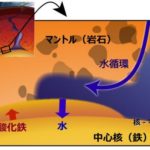(Team’s Flexible Micro LEDs May Reshape Future of Wearable Technology)
2020/8/31 アメリカ合衆国・テキサス大学ダラス校(UTDallas)

・ UT Dallas が韓国・世宗大学校等からなる国際研究チームと共同で、切り取って別の表面に貼り付けられる、折り曲げや捻りが可能なマイクロ LED を開発。フレキシブルな次世代ウェアラブル技術につながる可能性が期待できる。
・ ブレーキライトから電光掲示板まで広範囲に利用される LED は、軽量、薄さ、優れたエネルギー効率や様々な照明装置での見易さのため、電子デバイスのバックライティングやディスプレーに理想的なコンポーネント。
・ 最小 2μm であらゆるサイズに纏められるマイクロ LED は、スマートウォッチ等のスマートデバイスやフラットスクリーン TV、大面積ディスプレーで利用できるが、サイズにかかわらず壊れやすいため平坦な表面での使用に限られる。
・ 今回開発のマイクロ LED は、サファイア基板に LED 結晶の薄膜を成長させるリモートエピタキシー法で作製。極めてフレキシブルで、皺をつけたり半分に切ったりしても、衣類からゴム性の表面まであらゆるものに貼り付けられる。
・ 通常、LED はウェハーに固定されるが、これを取り剥がせるよう基板にグラフェン製の貼りつき防止層を追加。グラフェンは LED 材料との化学結合を形成しないため、LED をウェハーから剥がし別の表面への貼り付けが可能となる。
・ 同マイクロ LED の曲面への貼り付けや貼り付け表面の捻り、折り曲げ、切り取り等の試験を実施し、それらが LED の品質や電気特性に影響しないことを確認した。
・ フレキシブルな照明、衣類、ウェアラブルなバイオ医療デバイス等での利用を想定。LEDのウェハーは繰り返し利用できる。他の材料への同マイクロ LED 製造方法の応用について検討中。
・ 本研究は、韓国研究財団(NRF)、韓国科学技術研究院(KISTI)および米国エネルギー省(DOE)が一部資金を提供した。
URL: https://www.utdallas.edu/news/science-technology/micro-leds-2020/
<NEDO海外技術情報より>
(関連情報)
Science Advances 掲載論文(フルテキスト)
Remote heteroepitaxy of GaN microrod heterostructures for deformable light-emitting diodes and
wafer recycle
URL: https://advances.sciencemag.org/content/6/23/eaaz5180
Abstract
There have been rapidly increasing demands for flexible lighting apparatus, and micrometer-scale light-emitting diodes (LEDs) are regarded as one of the promising lighting sources for deformable device applications. Herein, we demonstrate a method of creating a deformable LED, based on remote heteroepitaxy of GaN microrod (MR) p–n junction arrays on c-Al2O3 wafer across graphene. The use of graphene allows the transfer of MR LED arrays onto a copper plate, and spatially separate MR arrays offer ideal device geometry suitable for deformable LED in various shapes without serious device performance degradation. Moreover, remote heteroepitaxy also allows the wafer to be reused, allowing reproducible production of MR LEDs using a single substrate without noticeable device degradation. The remote heteroepitaxial relation is determined by high-resolution scanning transmission electron microscopy, and the density functional theory simulations clarify how the remote heteroepitaxy is made possible through graphene.



